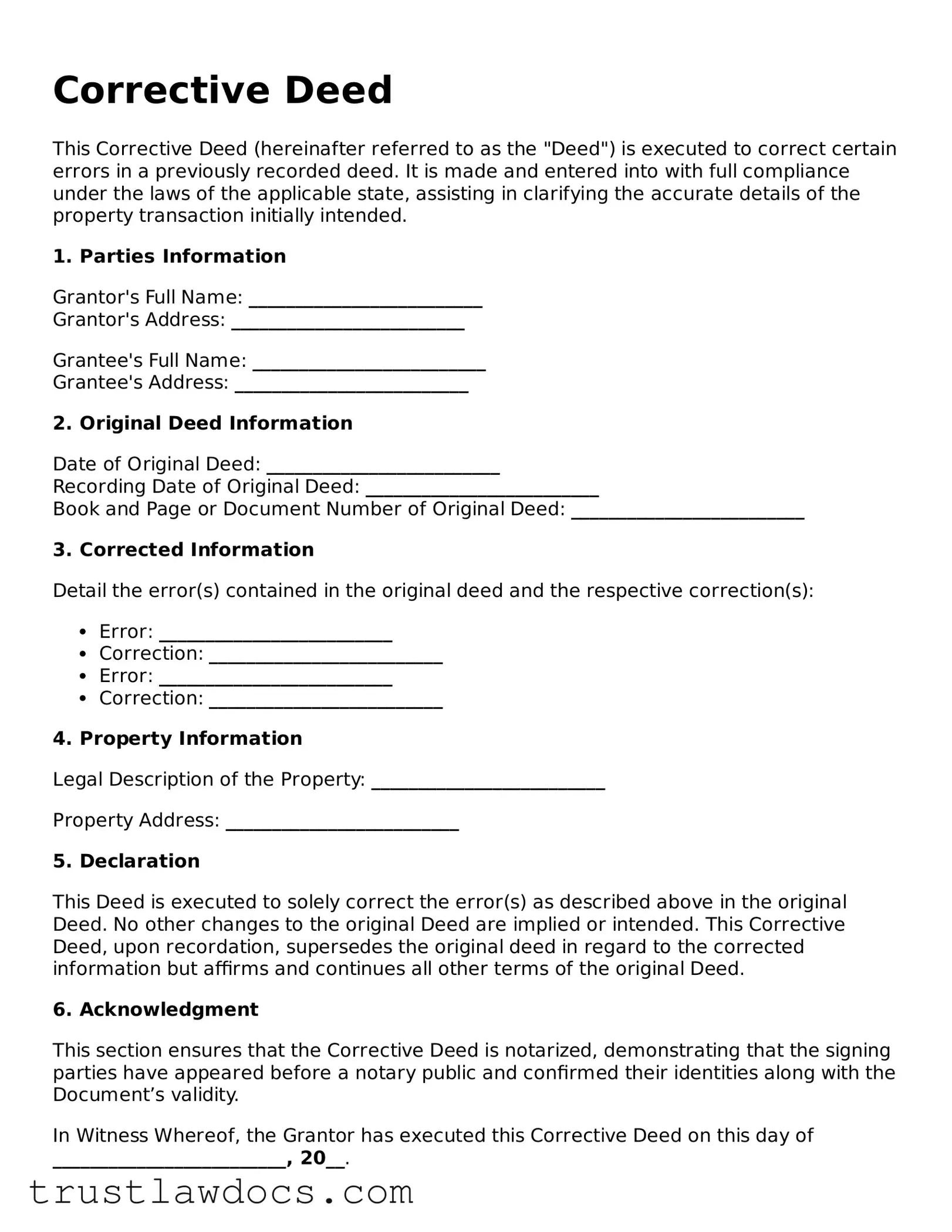Corrective Deed
This Corrective Deed (hereinafter referred to as the "Deed") is executed to correct certain errors in a previously recorded deed. It is made and entered into with full compliance under the laws of the applicable state, assisting in clarifying the accurate details of the property transaction initially intended.
1. Parties Information
Grantor's Full Name: _________________________
Grantor's Address: _________________________
Grantee's Full Name: _________________________
Grantee's Address: _________________________
2. Original Deed Information
Date of Original Deed: _________________________
Recording Date of Original Deed: _________________________
Book and Page or Document Number of Original Deed: _________________________
3. Corrected Information
Detail the error(s) contained in the original deed and the respective correction(s):
- Error: _________________________
- Correction: _________________________
- Error: _________________________
- Correction: _________________________
4. Property Information
Legal Description of the Property: _________________________
Property Address: _________________________
5. Declaration
This Deed is executed to solely correct the error(s) as described above in the original Deed. No other changes to the original Deed are implied or intended. This Corrective Deed, upon recordation, supersedes the original deed in regard to the corrected information but affirms and continues all other terms of the original Deed.
6. Acknowledgment
This section ensures that the Corrective Deed is notarized, demonstrating that the signing parties have appeared before a notary public and confirmed their identities along with the Document’s validity.
In Witness Whereof, the Grantor has executed this Corrective Deed on this day of _________________________, 20__.
Grantor's Signature: _________________________
State of _________________
County of ________________
Subscribed and sworn to (or affirmed) before me on this day of _________________________, 20__, by _________________________, who is personally known to me or has produced _________________________ as identification.
Notary Public's Signature: _________________________
Printed Name: _________________________
Commission Number: _________________________
My commission expires: _________________________
